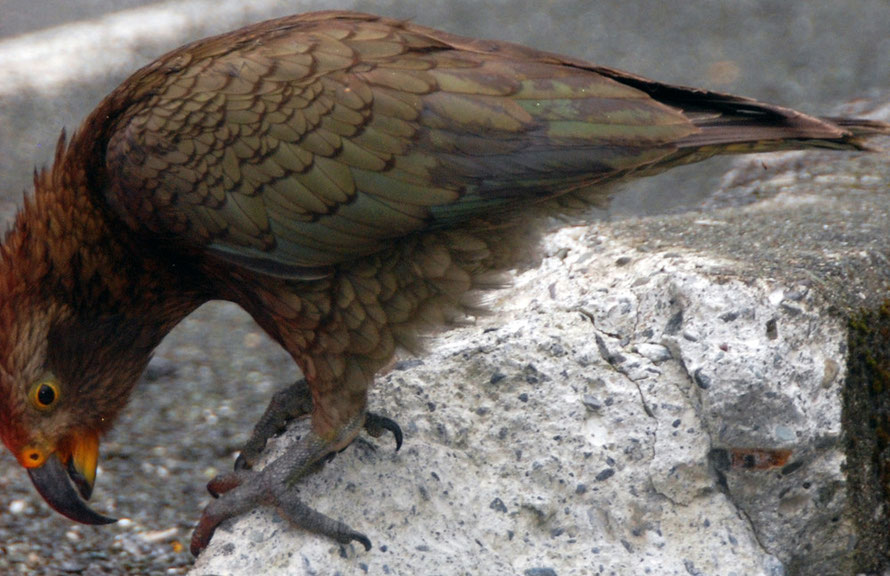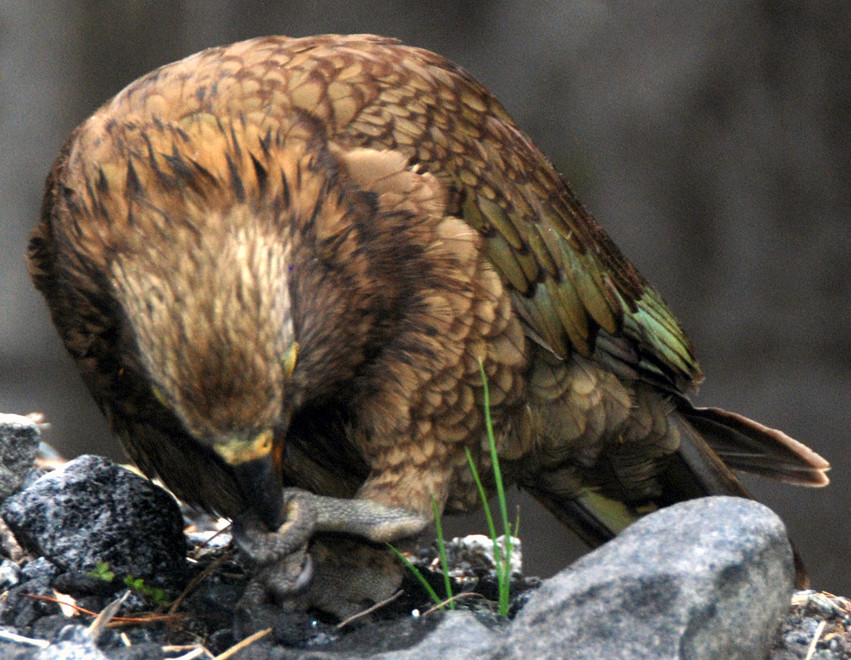X. Kea (Nestor notabilis)

The kea are the only true alpine parrot in the world.There are maybe 4,000 adult. 150,000 birds were shot between 1860 and 1970 as kea often attacked sheep, pecking at the fat around their kidneys.
Its ravages spawned the terms ‘kea’d’ and ‘to kea’, as well as ‘flag’ and ‘flagged’ (a flagged sheep has torn, flapping wool pulled from its back). People were employed to hunt and kill keas,
using a shotgun modified for the purpose, known as a 'kea gun' (Te Ara: Rural Language).
Distinctive behavioural and morphological traits of kea compared to other parrots include the slender bill, digging for food, ground nesting, winter breeding, social dynamics, intelligence, prolonged juvenile phase and use of alpine habitat. This combination of traits indicates an evolutionary history in an unforested habitat. It is likely that these characteristics evolved from a kaka-like ancestor during uplift of the Southern Alps over the last 5 million years (NZ Birds Online: Kea)



